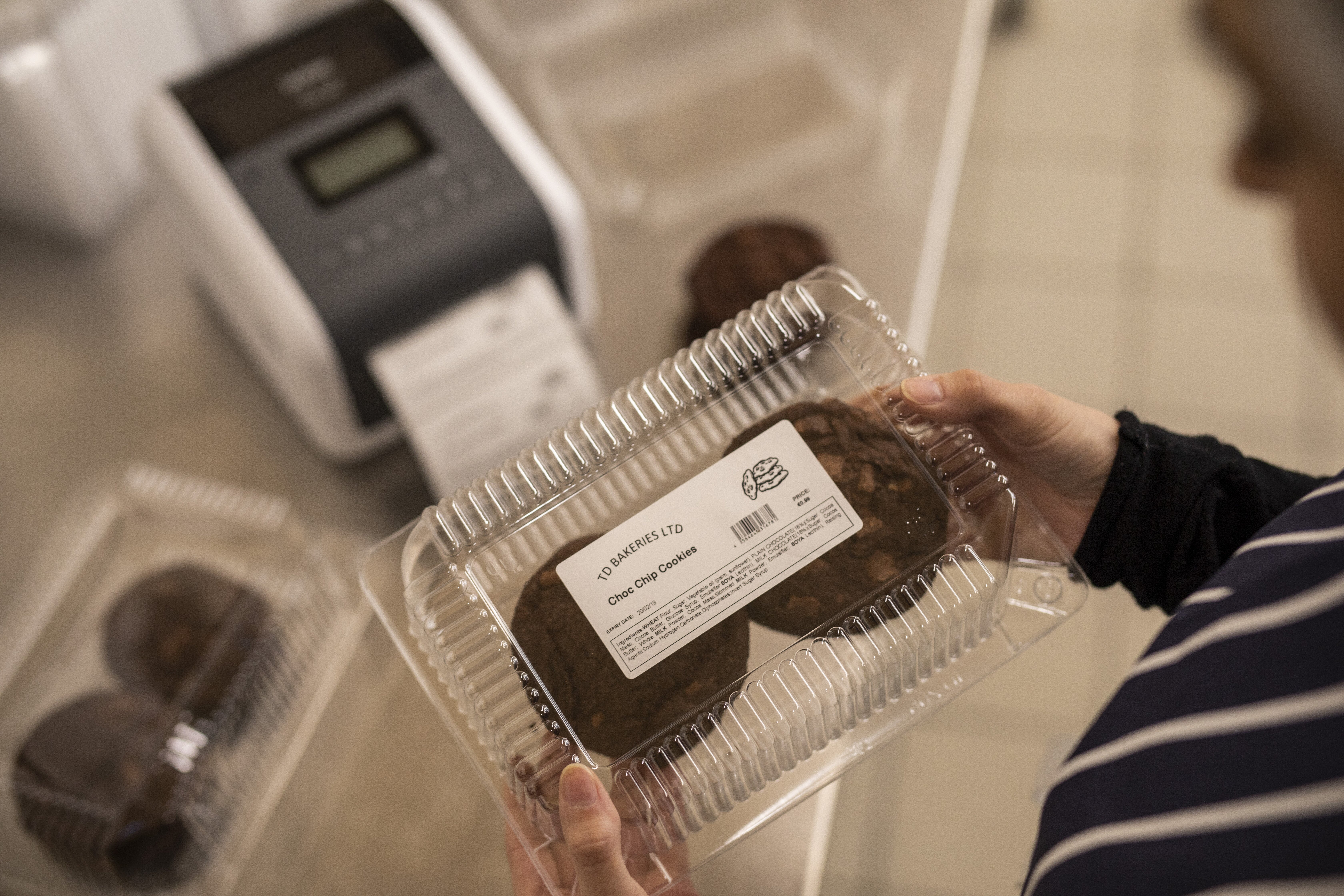Natasha’s Law: reflecting on the past two years
By Simon Brennan, Senior End User Client Manager for Labelling and Specialist Print, Brother UK
Two years ago, we saw the introduction of a new law that required any food industry company that sells pre-packaged for direct sale (PPDS) foods to re-think how they’re labelled. The law, formally known as Food Information (Amendment) (England) Regulations 2019, means that all PPDS foods must be clearly labelled with information on potential allergens present.
The state of compliance in the UK
The initial response to the new law was positive, with Brother UK research finding that 100% of food industry businesses surveyed agreed it would make customers with food allergies feel safer.
But while motivation to comply was there, businesses were faced to do so quickly. Solutions have ranged from handwritten labels to printing the information on paper, cutting it to size, and sticking it to the packaging. So, what has this meant for compliance rates?
A study carried out by Erudus, a market leading source for accurate allergy, nutritional and technical product data, found that more than half (54%)* of PPDS food labels still failed to accurately declare the presence of allergen ingredients. One of the most common reasons for non-compliance was illegibility due to poor handwriting, patchy printing or overlapping text.

Adapting to new requirements
It’s clear that there is work to do if businesses are to consistently meet these regulations while maintaining efficiency. Implementing the right technology can be an excellent way to do this, without adding extra pressure or strain on your team. The most appropriate solution will depend on the scale of the business, and how many locations it has.
For those with a single location, a stand-alone label printing solution might prove a cost- and time-efficient way to ensure good legibility of information. For those with multiple sites, or more complex requirements on a single site, integrating food labelling with a menu management system can help streamline the process of making changes to information by allowing it to be done from a single, central database.
Marka is one such system. Marka has helped customers, including leading international multi-channel Japanese food business Snowfox Group, find a better way to label accurately and in accordance with Natasha’s Law. It achieved this by analysing the group’s unique needs and implementing the right software and hardware to allow Snowfox to focus on the growth of its business without worrying about the tech.
Further changes ahead
It’s clear that many UK businesses are not yet compliant with current regulations, there are now calls for even clearer rules on food labelling, arguing that terms like “free-from” and “vegan” can be misleading. And there is the potential for changes to be made on how allergens are labelled on menus in restaurants if Owen’s Law – a campaign launched by the family of 18-year-old Owen Carey, a dairy allergy sufferer who died after eating a mis-labeled chicken burger that contained buttermilk – is introduced.
Reliable, easy-to-use technology can greatly improve a business’s ability to keep up with any regulatory changes and take the hard work out of compliance, day-in, day-out.
Evolving food labelling regulations have played a major role in improving food safety standards over the years, and have undoubtedly saved lives.
While it’s alarming that so many British businesses are still falling short of the current standards, the good news is that the challenges they face are easily fixed, with a wide range of robust and good-value labelling systems now on the market purpose built to make efficient compliance easy.
For in-depth, expert guidance on achieving and maintaining compliance as efficiently as possible, download our guide here
- Erudus’ study analysed 116 PPDS labels on foods purchased from delis, farm shops, cafés, food markets and festivals across the UK

















